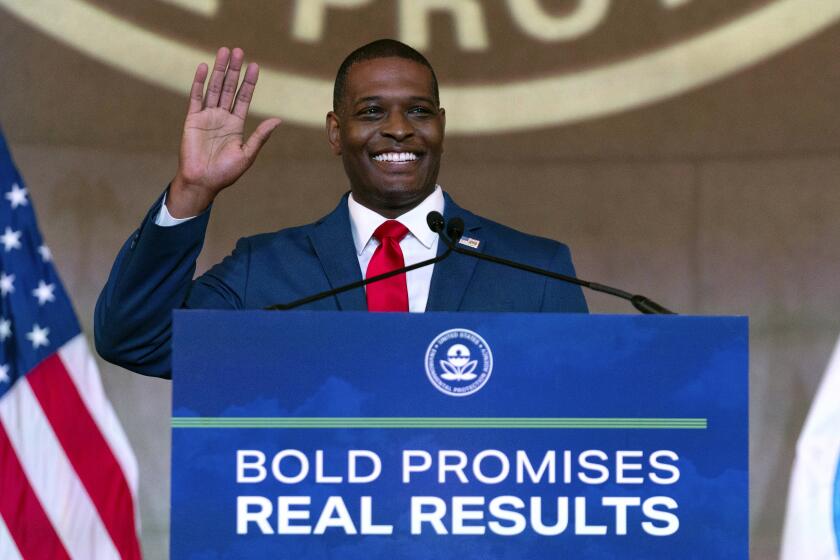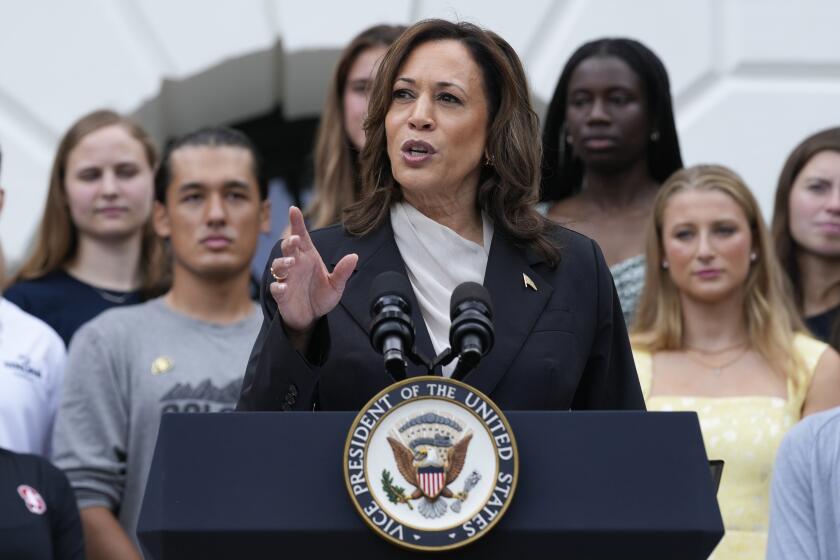A look at the new tobacco law
The tobacco bill signed into law by President Obama on June 22 is a compromise that acknowledges a few hard political facts:
More than 43 million Americans remain addicted to the nicotine in tobacco (indeed, 70% of smokers say they wish they could quit, and 40% try yearly).
Taxes on the sale of tobacco products are a major source of revenue for states.
Even without adding tobacco to its regulatory portfolio, the Food and Drug Administration is straining to carry out its other responsibilities, including the safety of the nation’s food, drugs and medical devices. The law stipulates that the FDA’s regulation will be underwritten by user fees levied on the tobacco companies.
Finally, regulating tobacco is a pretty tricky job for an agency given the task of protecting the nation’s health.
Tobacco is simply not like the drugs, medical devices and foods the FDA regulates: There are no demonstrable health benefits to tobacco against which the FDA can weigh the risks that go along with its use. In fact, some in Congress argued the FDA has no place in trying to merely limit the damage caused by a product that causes only addiction and harm. By giving its blessing to the sale of some tobacco products and denying others, they argue, the FDA may lead consumers (perhaps those who haven’t had contact with the outside world for the last 44 years) to think those products are safe.
Rep. Henry A. Waxman (D-Beverly Hills), chairman of the House Energy and Commerce Committee and the author and champion of the FDA-tobacco bill, acknowledges that this is an unusual role for the FDA. But short of tobacco prohibition -- which, he says, “isn’t going to work” -- the FDA is the only agency equipped to limit and reduce the damage that tobacco use does to the nation’s health, and stem the recruitment of new smokers among the nation’s youth.
“The FDA is the exact agency that should have that authority -- it’s a scientific organization with regulatory powers,” Waxman said in an interview.
Here are some of the bill’s principal provisions, and the FDA’s plans for carrying out its new mandate.
What are the FDA’s orders? The newly signed law grants the FDA broad authority to require changes in tobacco products currently on the market and those proposed for future sale “appropriate for the protection of the public’s health.”
That broad mandate would allow the FDA to reduce or remove from tobacco products ingredients, additives or constituents that it considers harmful. Some of the items likely to come under scrutiny -- such as ammonia and formaldehyde -- are probably unfamiliar ingredients to many consumers. But the list also will include flavorings. Chocolate and cherry, which enhance the appeal of tobacco to young people, are banned by the new law. Though menthol is not automatically banned, the FDA’s new jurisdiction would allow it, if it chose, to place limits on or even ban this flavoring, which is favored by 27% of all smokers and three-quarters of African American smokers.
The law gives the FDA responsibility for the pre-market approval of new tobacco products, which are defined as any tobacco product that has been introduced on the U.S. market since June 1, 2003, or are proposed for marketing here in the future. Companies sponsoring such products will have to submit to the FDA studies detailing their health effects. And the Secretary of Health and Human Services can, on the FDA’s recommendation, deny approval if the sponsoring company fails to show that the marketing of their product “would be appropriate for the protection of the public health.”
In short, new cigarettes, cigars or chewed or eaten tobacco products are unlikely to enter the market -- and several current products are likely to be pulled -- if it can’t be shown they reduce dependence or limit the harm of tobacco use.
Significantly, that assessment can consider a product’s ability to reduce harm to those who do not currently use tobacco products -- the bystanders who are affected, for instance, by secondhand smoke. That may open the way for some so-called bridge products, including smoke-free cigarettes or edible nicotine disks, to enter the market.
What are the limits of the FDA’s authority? The law prohibits the FDA from banning outright all tobacco products or any class of tobacco products -- such as cigarettes, cigars or chew. The agency may require the reduction of nicotine, tobacco’s most potently addictive ingredient, but is not permitted to require the chemical’s total elimination. Experts agree there are nicotine levels greater than zero that are not addictive but may provide some of the chemical’s pleasurable and energizing effects. But plunging more than 45 million Americans into nicotine withdrawal with the stroke of a pen was not considered a viable option.
What limits can the FDA place on tobacco advertising? The law gives the FDA broad authority to restrict marketing and promotion “to the fullest extent permissible” under the 1st Amendment -- a limit that is certain to be tested in future court cases.
The law gives the FDA specific permission to implement a spate of regulations it had set out in 1996, when the agency first asserted its right to regulate tobacco products. Those early rules -- and now the tobacco law -- were very specific about some of the restrictions the agency can impose.
Among those rules was a requirement that all advertising of tobacco products be in stark black-and-white only when it appears outdoors, in and around stores where tobacco is sold, or in publications with significant teen readership.
The content of the advertising messages for tobacco products is also subject to strict FDA regulation under the new law. Advertisements and packaging touting cigarettes as “light,” “mild” or “low” are banned, unless the manufacturer can prove that the product -- as it is actually smoked or consumed by users -- will significantly reduce the risk of tobacco-related diseases.
How can the FDA regulate the sale or marketing of tobacco to kids beyond the age restrictions on purchase of tobacco products that are already in place? The FDA can limit the advertising of tobacco products anywhere it believes that children and teens are the intended or the unintended audience for their pitches. The FDA’s 1996 rule banned all outdoor advertising within 1,000 feet of schools and playgrounds, outlawed all remaining tobacco brands’ sponsorship of sports or entertainment events, and ended any giveaways of goodies with the purchase of a tobacco product. All of these were marketing practices thought to appeal specifically to young people.
As for selling tobacco to minors, that would now be a federal offense, enforced directly by federal authorities instead of states.
Does the FDA have other powers to influence tobacco use? Yes, it has two. First, the law leaves to the FDA the decision of what future tobacco packaging will look like -- whether cigarette packages, for instance, will be required to carry warning labels in the form of bold language or graphic images depicting the health risks of smoking. That authority is likely to set up a debate among anti-smoking activists and health experts about the effectiveness of messages that scare or horrify in helping smokers quit.
Another of the FDA’s most intriguing new powers is the right to demand of tobacco companies details of research they have conducted on the contents and health effects of existing and future products --and, potentially, to release those findings to the public.
That is likely to bring American consumers further details about the estimated 60 carcinogens and 4,000 toxic substances found in tobacco products or created when they’re smoked.
It is also likely to bring to light tobacco-sponsored marketing and scientific research on smokers’ motivations and behavior, and their propensity to addiction, and what ingredients or advertising messages can enhance that propensity.
--
More to Read
Sign up for Essential California
The most important California stories and recommendations in your inbox every morning.
You may occasionally receive promotional content from the Los Angeles Times.







